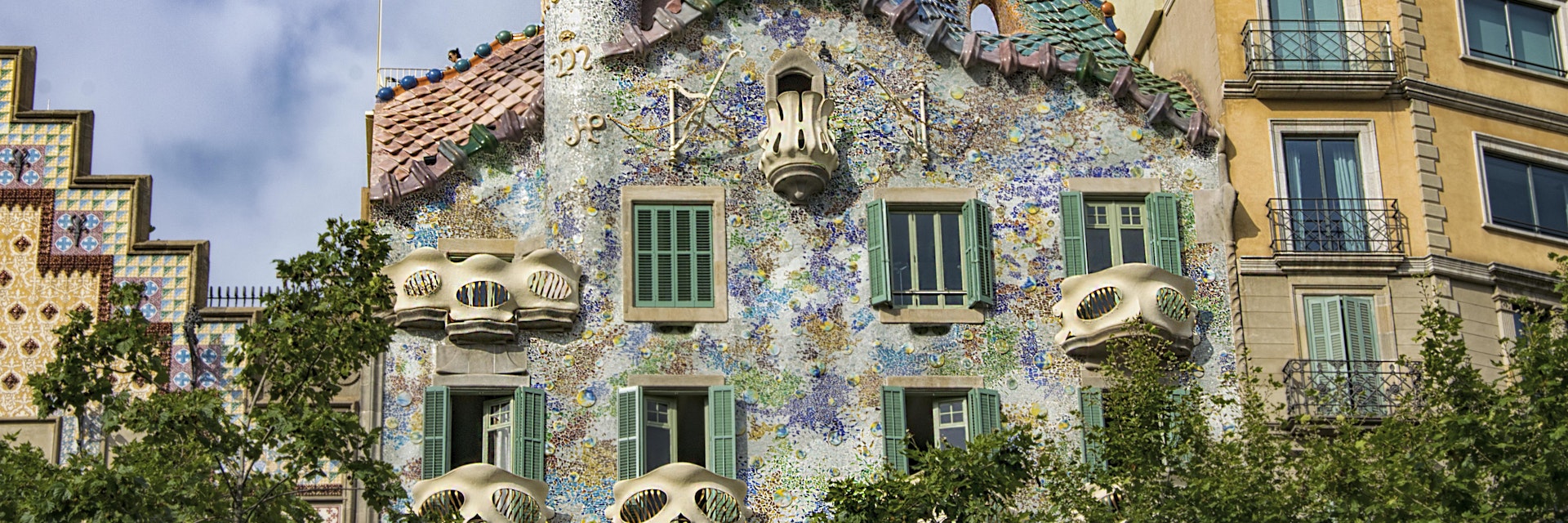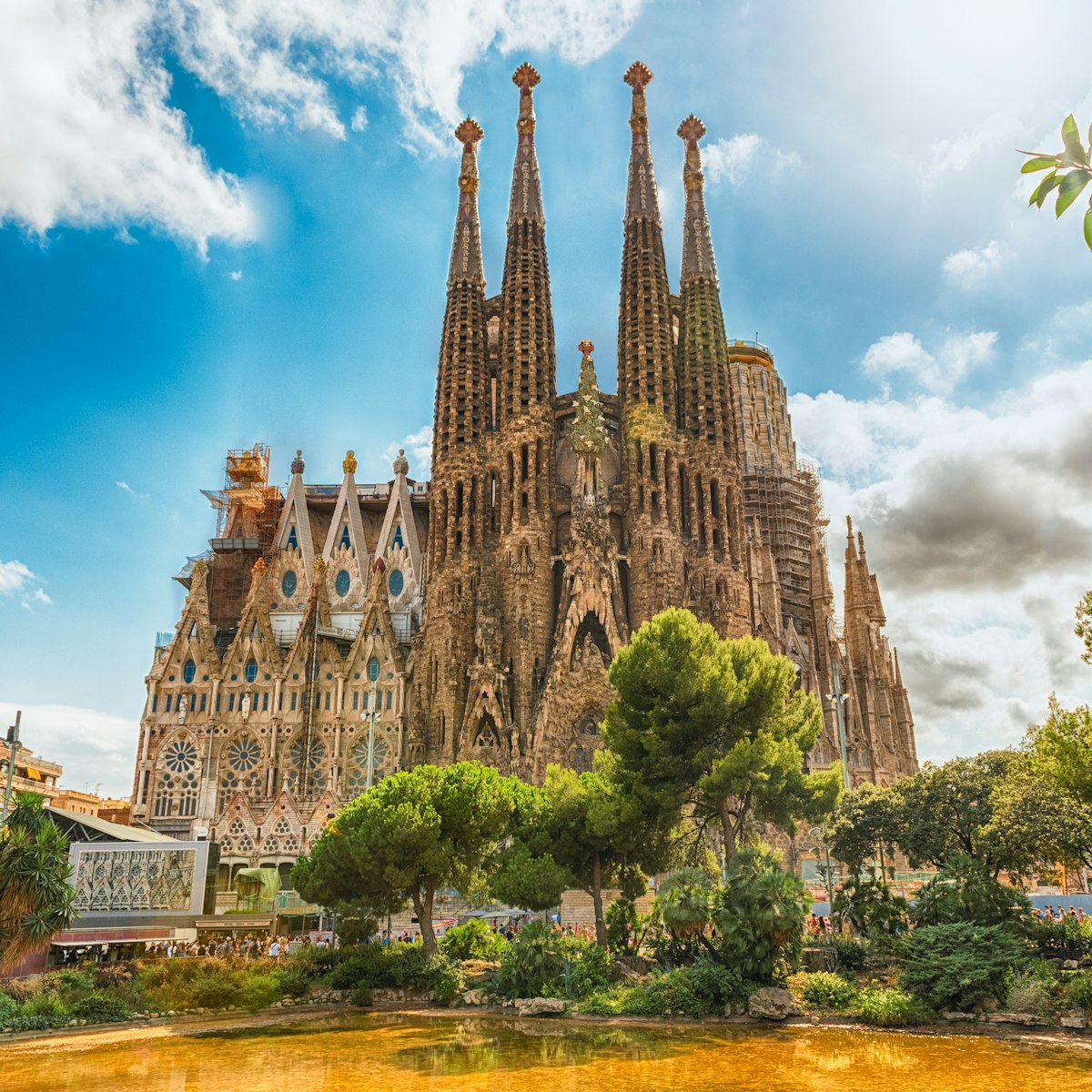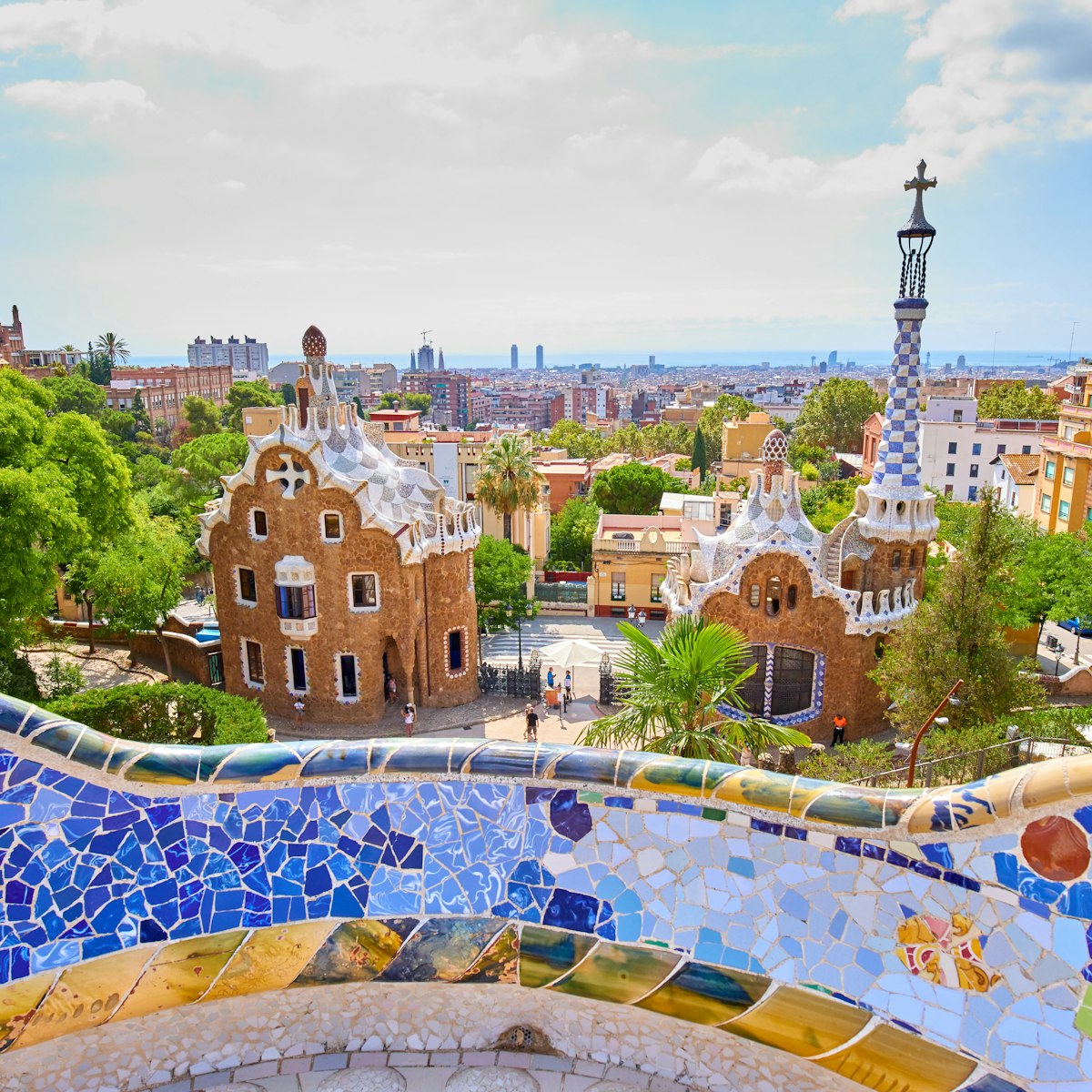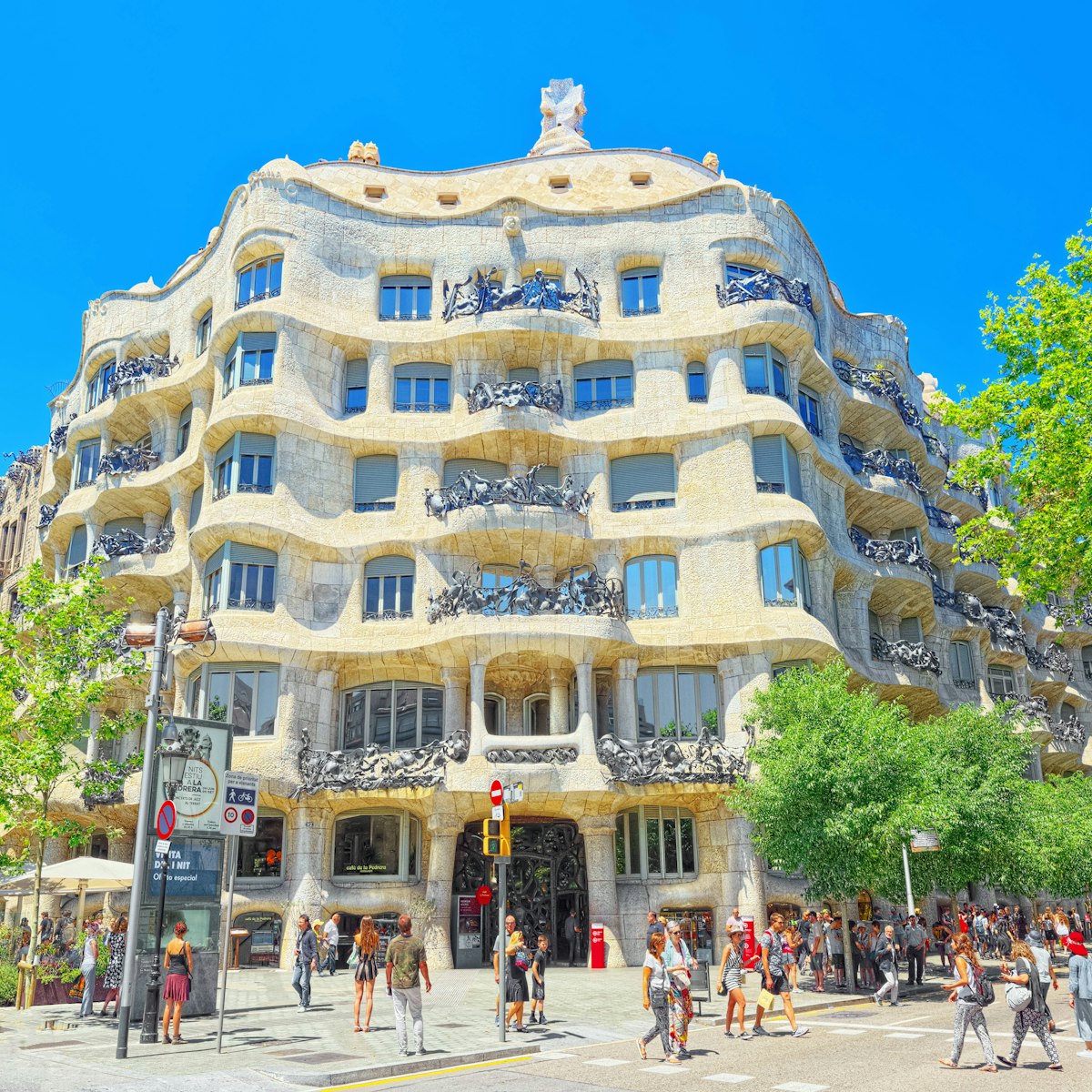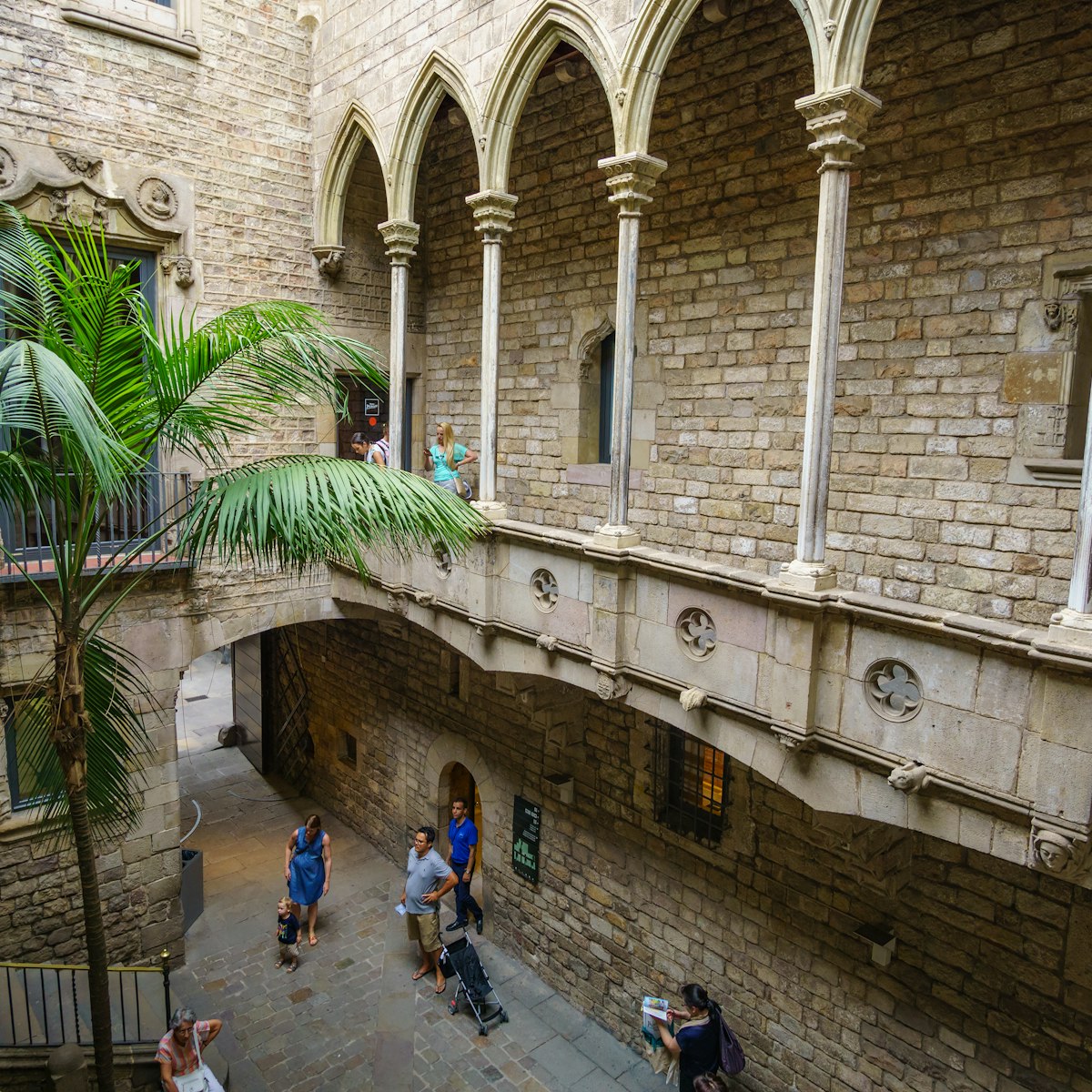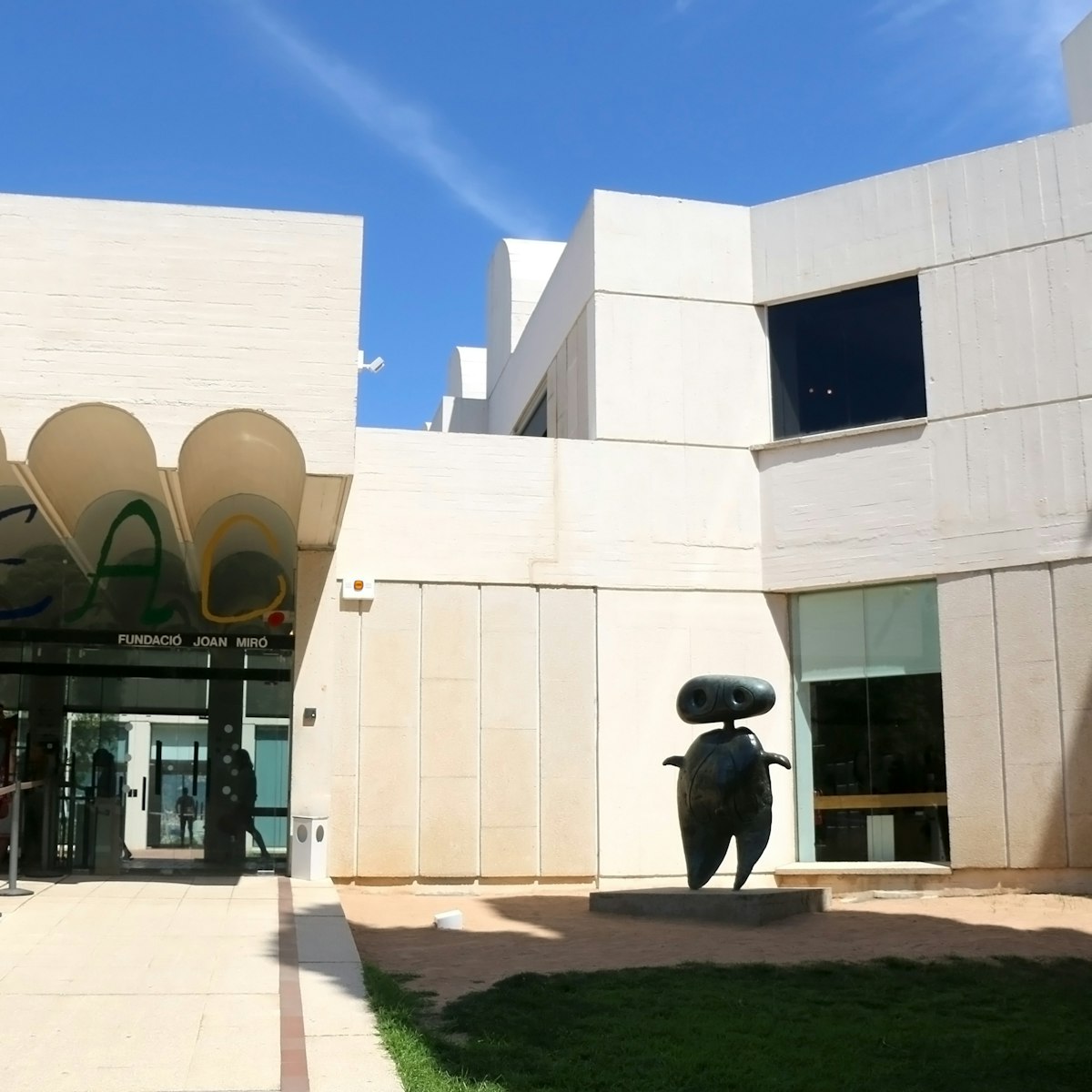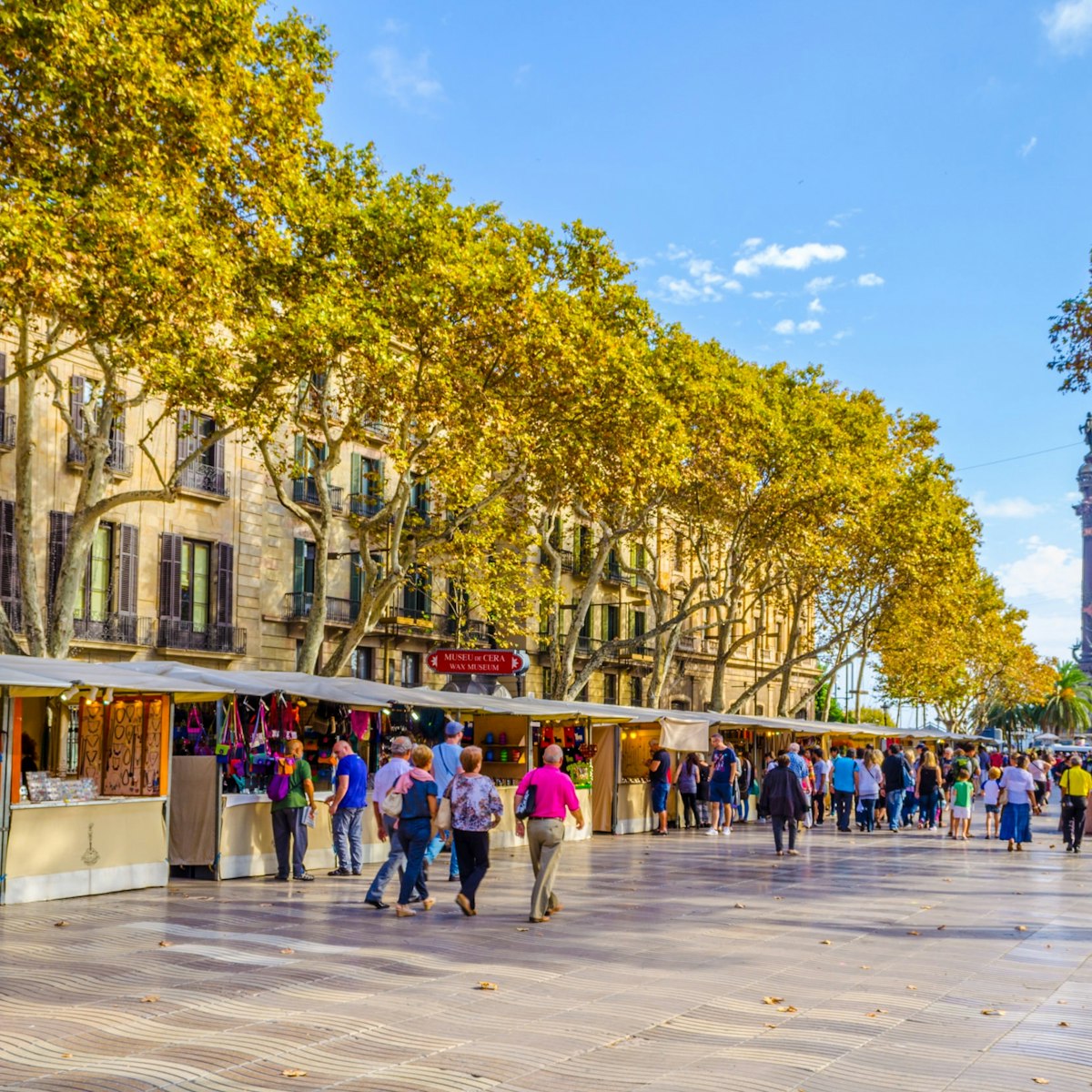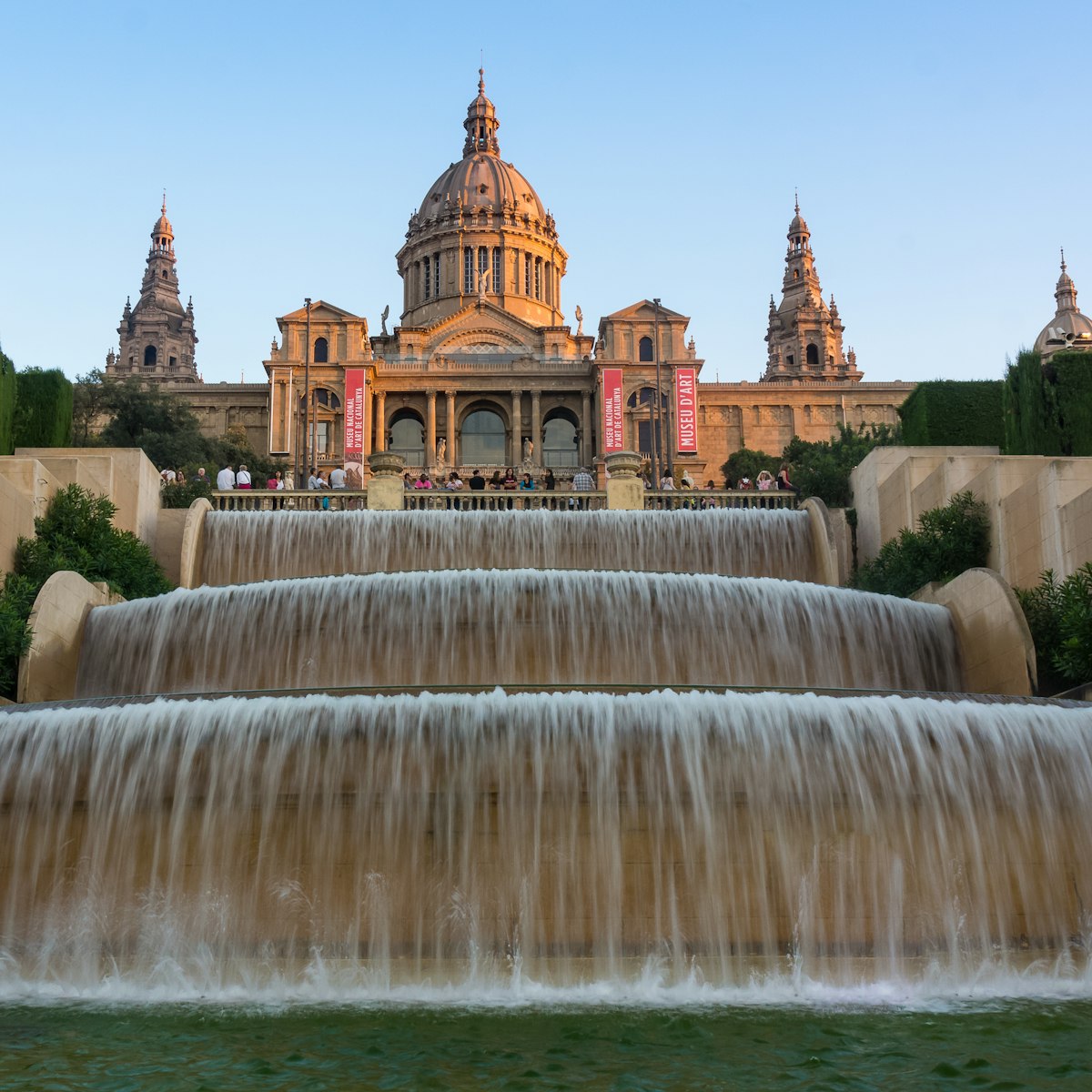An unmatched architectural treasure in a city defined by its otherworldly Modernista buildings, Unesco-listed Casa Batlló is undoubtedly one of Antoni Gaudí’s great jewels.
Created between 1904 and 1906 for the wealthy Batlló family, the once-private home on glamorous Passeig de Gràcia combines a shimmering tile-covered facade, bone-evoking stone columns, a dragon-back-shaped rooftop and undulating marine-world forms with revolutionary advances in both light and architecture. This is Gaudí at his whimsical, nature-inspired peak.
As you gaze at the building’s swirling shapes, delicate trencadís (smashed-up tilework) and curving design (Gaudí avoided straight lines as nature doesn’t have any), the whole place feels almost alive. For many people, the legend of Sant Jordi (Saint George – the patron saint of Catalonia) and the Dragon runs through the entire structure, and you’ll certainly feel this up on the unmissable rooftop.
Unlike Gaudí’s neighboring, also-spectacular La Pedrera (Casa Milà), which was originally conceived as apartments and offices, Casa Batlló was a custom-designed residential home from the beginning and most of the privately owned building is now open to visitors.
Insider tip
From around March to autumn, Casa Batlló offers live-music performances up on the roof terrace – flamenco, jazz, rock and more. These tickets also include an after-hours tour of the building, along with a sunset drink on the rooftop before the show starts.
History of Casa Batlló
This building originally went up in 1877 under the watch of architect Emili Sala i Cortés, during the major construction boom along Passeig de Gràcia as Barcelona’s brand-new Eixample district was brought to life from scratch. But when it was taken over by the local textiles magnate Josep Batlló i Casanovas in 1903, he brought in Gaudí to renovate the entire property with complete creative freedom.
Casa Batlló is flanked on one side by the 1900 Casa Amatller (designed by Modernista architect Josep Puig i Cadafalch), while the 1905 Casa Lleó Morera (courtesy of Lluís Domènech i Montaner) sits a few doors down. Jointly known as the Mansana de la Discòrdia (Block of Discord), these three fantastical buildings are a testament both to the many whims of Catalonia’s Modernisme movement and the enormous local wealth poured into their creation.
Highlights of Casa Batlló
The facade
There’s no missing Casa Batlló’s fantastical facade, overlooking Passeig de Gràcia just a few blocks northwest of Plaça de Catalunya. With its slender stone window columns and wavy mask-shaped balconies, it’s easy to see why the building has been locally known as the casa dels ossos (house of bones) for years.
A wildly beautiful canvas of blue, green and purple trencadís tilework ripples across the exterior – many experts liken it to the French Impressionist Claude Monet’s famous Water Lilies. Each April, during Barcelona’s Sant Jordi festivities, the balconies are decorated with swirls of red roses.
Step inside
Climbing the spiral wood-banister staircase to the main, early-20th-century salon on the 1st floor is like wandering into a monumental work of art. Wave-like wooden windows adorned with mollusk-shaped stained glass stretch across the length of the room, which gazes out onto Passeig de Gràcia, and the ceiling swirls like the sea around a splendid chandelier.
Continuing on, Gaudí’s clever use of natural light means the ocean-blue lightwell feels almost like a moving wave. At the back of the building, tile-covered plant pots and more than 300 pieces of trencadís adorn the back terrace, which was designed as a hidden retreat in the thick of the city.
Up on the roof
In the lofty attic, you’ll walk through 60 signature-Gaudí hyperboloid arches, which together resemble an animal’s ribcage. But Casa Batlló’s showstopper is the surreal meandering roof terrace, where colorfully tiled chimneys (another Gaudí specialty) spiral towards the sky and Barcelona sprawls out all around you.
The sparkling roof has the shape of a dragon’s back – its scale-like tiles even change color depending on where it’s glimpsed from, and the four-armed cross is said to represent Sant Jordi’s sword.
A feast for all the senses
A prize-winning renovation has brought in an all-new cutting-edge immersive experience at Casa Batlló. This includes the Gaudí Dôme – a sensory multimedia space set within the basement’s former coal bunkers that explores Gaudí’s strong connection with the natural world – and Turkish-American digital artist Refik Anadol’s Gaudí Cube, created as a deep-dive into the architect’s mind.
Another surprise is the bold "intervention" by Japanese architect Kengo Kuma, who has breathed new life into the building’s emergency staircase with a rippling multi-floor aluminum-chain curtain that continues Gaudí’s play with light, shapes and space.
Tickets and other practicalities
Casa Batlló is open daily from around 9am to 8pm. For a full visit with a detailed audioguide (available in 15 languages), you’ll want around one to 1½ hours. Book tickets (adult/child €29/free under 12) in advance to skip the queues; the best prices are direct through the website.
If you'd prefer to sidestep the crowds, the best time to visit is either first thing in the morning or towards closing time, and ideally outside peak summer months when the city in general is less busy. "Be the First" tickets (adult/child €45/free under 12) bag you entry at around 8.30am, with just a few other visitors for company.
